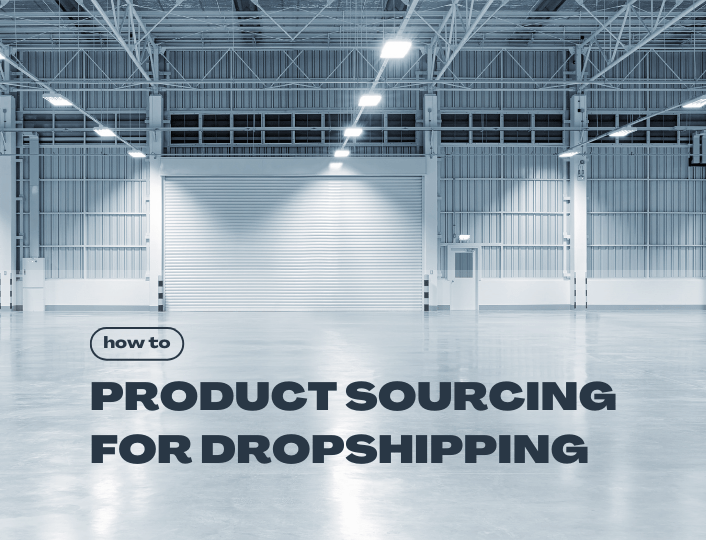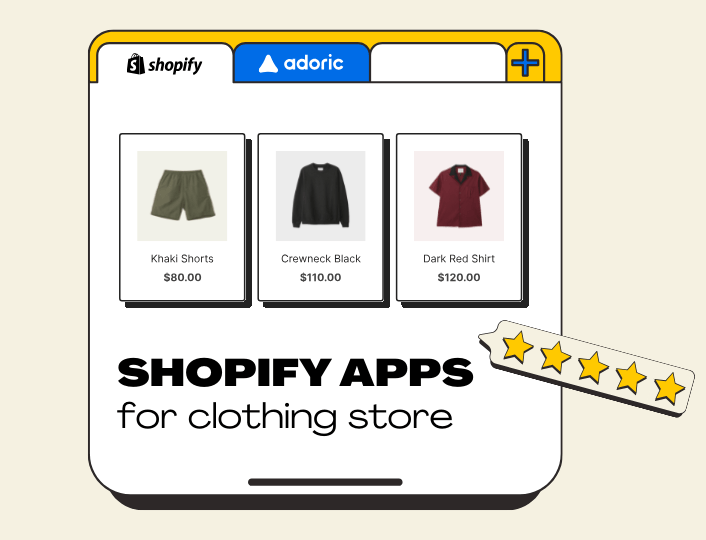One of the major challenges of running a dropshipping store is finding reliable suppliers to source products. It gets harder if it’s your first rodeo.
Developing the right sourcing strategy is crucial for the success of your dropshipping business. This is because if you get it right, you will easily deliver high-quality products to your customers on time.
But if you get it wrong, your business reputation will be on the line.
In this post, we will share with you tried-and-true strategies for sourcing products for dropshipping. Let’s dive straight in!
What is Product Sourcing?
Product sourcing is finding and buying products to sell in your store from suppliers or manufacturers to resell them. Depending on your sales method, there are different ways to source for products:
- Local producers provide perishable goods like food and fruits, as well as other items found in your community.
- From manufacturers of the products—buying wholesales from the factories and reselling in retail.
- Buy products from online suppliers in the B2B marketplace without needing inventory. Source products from suppliers only when orders are placed. The supplier takes care of the order fulfilment and shipping to customers.
These methods for finding products work for different types of businesses. Make sure to choose the best method for your store.
Ways to Source Products for Your Dropshipping Store
There are four main methods of sourcing products for your store. They are:
- Make your product
- Dropshipping Supplier
- Wholesaler
- Manufacturer
Make Your Product
Creating your own products goes against the dropshipping concept, which is about not holding any inventory. But it offers several benefits.
For starters, creating your products puts quality control in your hands. Secondly, you can control how quickly orders get delivered to customers.
Do you know the best part? You don’t even have to produce anything if you don’t want to. That sounds contradictory, doesn’t it? Let’s explain.
If you use print-on-demand platforms like Printify or Printful, you don’t need to make or store any products. You just need to design the product, and we will take care of the rest for you: production, storage, fulfillment, and even returns.
Sourcing from a Dropshipping Supplier
Sourcing from dropshipping suppliers is one of the easiest ways to source products. You do not need any upfront investment in dropshipping. Your supplier takes care of everything from order fulfilment to product delivery.
How does Dropshipping work?
Marketplaces like Alibaba, AliExpress and Amazon feature many dropshipping suppliers to choose from. Once you have selected a reliable supplier, you can easily add their products to your Shopify store. This will help you increase traffic to your site by promoting their products.
When you place an order, your supplier is notified and starts preparing and shipping it to you. No holding of inventory or middleman.
Use dropshipping apps like dropshipping.com to source the best dropshipping products and connect to reliable suppliers. Plus, it lets you automatically connect your store to the marketplace and automate the dropshipping process.
Pros of Dropshipping
- No holding of inventory or upfront payment
- Low investment risk
- Easy to scale up – since you can easily add products to your products to your store without spending a fortune.
Cons of Dropshipping
- It’s tough to stand out – Many stores sell the same products, making competition fierce. To succeed, you need to work hard and keep customers interested in your store.
- Low-profit margin – Margins are low as your supplier takes care of the bulky part of the dropshipping process.
Sourcing from WholeSaler
Unlike dropshipping which requires no inventory and the supplier takes care of the order fulfilment and shipping. Buying from wholesalers involves purchasing inventory in large quantities, storing it, and handling order processing.
Buying wholesale is a good product-sourcing strategy for people wanting to do the job quickly. Sourcing products in this method is straightforward. Also, it is easier to manage when compared to other sourcing options like manufacturing.
Buying in bulk has benefits like private labeling services. Your wholesale supplier can put your brand’s logo and business name on the merchandise.
Pros of Wholesale Supplying
- Low-cost per unit -The wholesaler wants you to buy more from them. So, the more units you buy, the cheaper the cost per unit.
- High-profit margin – Since the prices of products are cheaper, you tend to make more profit from product sales.
Cons of Wholesale Supplying
- High-risk investment
- Storage Facility – Since, you buy in bulk, you’ll need a facility to store your product pending demands.
Manufacturing
Manufacturing is the most challenging of the three methods. This method is perfect for people with new or unique ideas or who want a variation of the existing one.
Product sourcing involves creating products from scratch, including designing and prototyping, unlike wholesale and dropshipping which sell finished products. Afterwards, you must evaluate manufacturers and order test batches before choosing a supplier.
It is important to perform market evaluation as manufacturing requires the most upfront investment. You wouldn’t want to lose your investment by partnering with the wrong manufacturer.
With that being said, there are two types of products to source from a manufacturer:
Private label – The manufacturer creates products only for your business. You decide the design, determine the product features, package it, and include your business label. This is ideal for creating unique products.
White label – You do not have full control of the products here. Manufacturers may produce the same products or make slight variations to sell to your competitors. Mostly used for producing generic products.
Pros of sourcing through Manufacturers
- You have full control over branding and prices.
- You can control the quality of your final product
- Producing larger quantities results in lower costs per unit
- High-profit margin
Cons of sourcing through Manufacturing
- Buying products from manufacturers can be expensive because there is a fee that needs to be paid before production starts. This fee covers the cost of making a certain amount of products.
- Time-consuming – Since there are many steps involved from product design to finished products, it can take months to get the products ready.
Tips for Product Sourcing the Right Way
1. Market Research
Market research is the first crucial step in sourcing products the right way. It is the act of gathering information about customers’ needs, preferences, buying behaviour, competitors and the market. Analysing the data to make informed business decisions about product development, marketing and targeting. This insight will help you to choose products that are in demand and align with your customer’s interests.
Before you start product sourcing, you need to answer questions like
- What is the total addressable market (TAM), serviceable available market (SAM) and share of market (SOM)?
- What are the latest trends impacting your market?
- What kinds of goods are the most successful in the market?
- What value of needs does your product fulfil?
- Who are your direct and indirect competitors? etc
Answers to these questions will be the determinants in choosing the product sourcing strategy for your business.
But how do you get market research answers and data for insights?
Survey – A survey is one of the primary methods used to gather information about a product, market and audience. It can be exploratory, descriptive or casual. Click to learn different types of survey methods.
Government Reports and Trade Publications – These are some of the secondary methods of gathering insight and data.
2. Choose Quality Over Price
One secret of successful dropshippers is sourcing high-quality products. New dropshippers may want to go for cheaper, low-quality products. It may seem like the best deal buy may result in lots of returns, negative reviews and damage to your brand reputation.
Choose high-quality products for your dropshipping business. This will boost your store’s reputation. Plus, customers are willing to pay more for high-quality items that meet their expectations.
3. Find Reliable Suppliers
Suppliers play key roles in product sourcing. You need to work with suppliers that are trustworthy and can deliver at all times.
Some dropshipping businesses fail because suppliers don’t fulfill their agreements and send faulty products to customers.
To prevent that, research and vet your potential suppliers properly. Judge them by their product quality, capacity, lead time, delivery time, defects, returns, customer complaints, and reviews.
Look for suppliers with a track record of reliability and effective communication. Connect to reliable dropshipping suppliers from dropshipping.com.
4. Consider Multiple Suppliers
While working with one supplier makes product sourcing easy, do not solely rely on one supplier for your products. Having more than one supplier lowers the risk of supply chain issues and helps with negotiating better prices and terms.
Embracing a multi-supplier approach offers businesses flexibility and safeguards them against potential stock shortages, delays and operational disruption. Build strong relationships with your suppliers.
If you perceive that a supplier isn’t aligned with your interests, you should reassess the relationship. This could involve renegotiating contracts and investigating alternative avenues.
5. Test Samples
Request test samples from your selected suppliers. This should be done before committing to large orders to avoid loss.
This is crucial to evaluate the quality of the potential product and delivery time. Compare their delivery status to the actual delivery time. This will give you more insight into who to choose over the other.
Test samples allow you to assess the product quality, shipping time, packaging and the overall customer experience. You should reconsider any supplier lacking in these areas.
6. Stay Flexible
Market trends and customer preferences can change rapidly. Be flexible and adjust your product sourcing strategy to stay competitive and meet customer demand. Stay agile in business.
Product Sourcing FAQs
What are the common challenges in product sourcing?
Businesses encounter challenges all the time and product sourcing is no exception. Finding good suppliers, negotiating terms, ensuring quality, and managing logistics are common challenges in product sourcing.
Dealing with currency fluctuations and international trade issues are also part of the process. Each step requires careful consideration and attention to detail. It is important to navigate these challenges effectively to ensure a successful sourcing process.
What is reverse sourcing?
Simply, reverse sourcing is the opposite of product sourcing. Product sourcing usually starts by finding a supplier, then choosing products. Reverse sourcing starts by selecting a product to sell, then finding suppliers.
Where can I source Dropshipping Products?
Marketplaces like Alibaba, Aliexpress and Amazon are some of the popular e-commerce platforms to source for products. Other platforms exist to source products and suppliers from. Here are the 15 best dropshipping suppliers for your Shopify store.
What role does sustainability play in product sourcing?
Sustainability is increasingly important in product sourcing as consumers and stakeholders demand ethically and environmentally responsible practices. Purchase items from suppliers who use sustainable practices, eco-friendly materials, and ethical labor standards. This will align with your company’s values and meet the demands of the market.
Conclusion
To succeed as a dropshipper, you must excel at sourcing top products from reliable suppliers. Timing is crucial in this business.
It may take time to fully understand, but if you use the tips we shared, you will eventually become an expert.
Explore how Adoric helps Shopify sellers build visibility, sell more, and retain customers.




